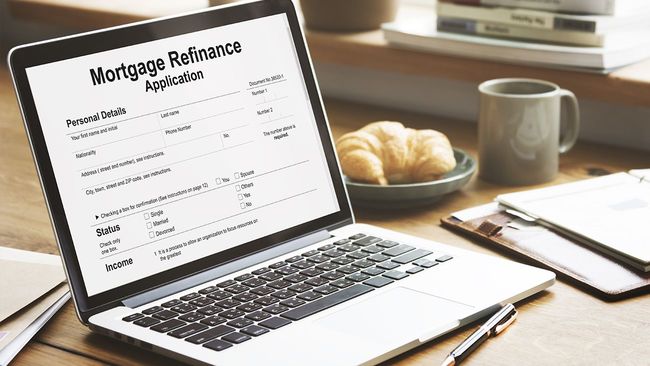When Does Refinancing From 30- to 15-Year Mortgages Make the Most Sense?

Published April 21, 2022
Homeowners refinancing from 30- to 15-year mortgage terms are looking for a shorter loan but may not know the ideal time to refinance. In addition, interest rates can fluctuate, and the housing market remains fluid. These factors can contribute to a homeowner’s reluctance to revisit their loan term, even if doing so has obvious financial benefits.
If you’re interested in refinancing from 30-year to 15-year terms, take stock of your finances and motivations for refinancing. Consider how much of a financial cushion you have, especially if you plan to increase your monthly mortgage payments. You’ll need to prove to a lender that you can meet these payments. Showing that you have robust savings will indicate you can invest more money as needed.
All homeowners have certain motivations when refinancing from 30- to 15-year mortgages. As a rule of thumb, you may consider refinancing if:
-
Interest rates drop
-
You want to prioritize paying down your mortgage over making other investments
-
You added an additional income to the house
-
You recently came into large sums of inheritance or insurance funds
-
Your cash flow is steady and anticipated to remain unchanged during the loan’s life
Many homeowners realize that you can prioritize achieving debt-free homeownership faster with a 15-year mortgage. You may also be aware that you ought to take advantage of locking in a low rate when you find one. Your refinancing plan may look different from your family member’s or best friend’s, but that’s the nature of mortgage lending. If you’re in the market for refinancing from 30- to 15-year mortgage loans, here’s what you should know.
What to expect when refinancing from 30-year to 15-year terms
Refinancing a loan to a shorter-term isn’t for everyone, but certain homeowners will benefit from it. Before refinancing, it’s essential to manage your expectations and prepare for the following realities. Here are a few experiences to expect.
-
Lower interest rates: You will see your higher monthly payments with a 15-year loan get distributed in a new way. More of your payment covers the home loan’s principal balance. Over the loan’s life, you may save tens of thousands of dollars.
-
Faster homeownership: People interested in owning their home faster can achieve it by refinancing from 30- to 15-year mortgage terms.
-
Efficient equity building: Homeowners can build equity faster due to their lower interest and shorter mortgage term. By paying into the principal, more of the payments that you’ll make will go into the home itself.
-
Closing costs: You’ll most likely need to pay closing costs if you refinance to a 15-year mortgage.
-
Less financial adaptability: Take into consideration your other investments. These may include putting money into your retirement or emergency savings. Putting more funds into monthly mortgage payments can shift your overall priorities.
-
Higher payments: Shortening your loan term translates to making higher monthly payments. Before refinancing from 30- to 15-year mortgage terms, you’ll need to guarantee that you can follow your new payment schedule.
If you’re in strong financial standing and eager to pay off your loan, get in touch. Our mortgage consultants will gladly answer any of your questions. We can also set a longer appointment to help you complete your mortgage application.
Does it make sense to treat a 30-year loan like a 15-year loan?
As a homeowner, you’ve likely received well-meaning but sometimes contradictory advice. When it comes to refinancing, some people encourage treating your 30-year loan like a 15-year loan. They may have suggested that you pay more each month and avoid refinancing from 30- to 15-year mortgage to circumvent the tighter payment schedule and closing cost fees.
There’s no denying that this is wise advice. For some people, paying extra when possible works in their favor. However, others may find that the advice comes up short for their specific financial goals, especially if they’re looking to cash in on the perks of a 15-year loan. The significant drawbacks of embracing this technique may include:
-
Paying off your loan for longer: Paying a little more each month on your 30-year loan will likely take you longer than refinancing to a 15-year loan. If you’re hoping to retire debt-free, planning to refinance to 15 years can help reduce future financial stresses.
-
Keeping the same interest rate: Refinancing from 30- to 15-year mortgages means that you can secure a better – and lower – interest rate. Locking in your fixed-rate mortgage refinance when rates are low is part of the reason why homeowners refinance. Sticking with your original mortgage and paying more each month means losing that opportunity.
If you’re considering refinancing into a shorter loan term, you can start by paying a little more each month on your 30-year mortgage. After your trial run, you may have a better idea of your ability to stick to a set 15-year refinance plan.
How to prepare for a 15-year refinance
If you’re still in the early planning stages of refinancing from a 30- to a 15-year mortgage, remember to take your time when making decisions. Planning ahead is an essential step in the process. There are specific ways you can prepare to make refinancing from 30-year to 15-year terms feasible.
-
Lower your monthly expenses. Identify which of your spending habits are redundant or non-essential. You can use these extra funds to meet the higher monthly payments.
-
Pay off or pay down easier debts. Paying off your credit card balances will help you show that you can handle bigger bills each month.
-
Establish your credit history. Work to resolve any accounts in poor standing. Doing so will allow you to improve your credit score and access the best credit rates and terms.
-
Offer proof of steady income. Refinancing from 30- to 15-year mortgage terms requires you to prove that you have a consistent source of income.
If shortening your term from 30 to 15 years is your goal, let us know. Your personal finances and long-term plans will influence your decision. Our goal is to ensure that you’re not settling for any home loan but that you secure a loan that meets your unique needs.




